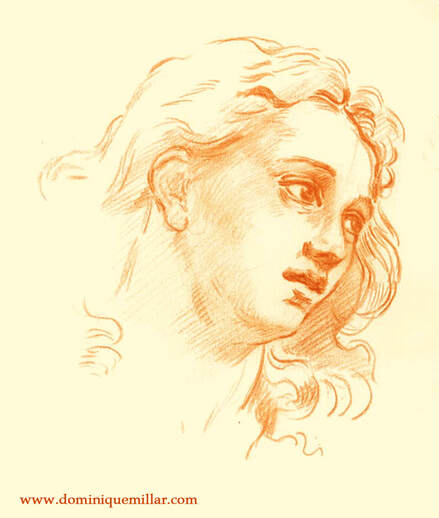The "Divine" Raphael
Born in the hill town of Urbino, in Italy’s Marches region, in only two decades Raphael had created an artistic legacy on par with his three great contemporaries Leonardo, Michelangelo and Titian. Yet Raphael’s greatest talent lay in his ability to absorb stylistic and technical lessons from numerous great painters, making them his own: the rich colouring and grace of Perugino, the invented tonality of Leonardo and the grand monumentality of Michelangelo. Added to this was his profound study of the antiquarian past while working under the papacies of Pope Julius II and Leo X. Raphael’s reputation did not die with him. His art went on to become an aesthetic ideal for centuries and his life was seen to embody the exemplary character of the courtier artist.
SUGGESTED READING
- Giorgio Vasari, Lives of the Artists (Volume 1) trans. George Bull (Penguin Books, 2011).
- Ludovico Dolce, Dolce’s ‘Aretino’ and Venetian Art Theory of the Cinquecento, trans, Mark W. Roskill (University of Toronto Press, 2000).
- John Shearman, Raphael in Early Modern Sources 1483–1602 (Yale University Press, 2003).
- Clare Brown and Mark Evans, Raphael: Cartoons and Tapestries for the Sistine Chapel (Victoria & Albert Museum, 2011).
- Guido Cornini, Raphael in the Apartments of Julius II and Leo X: Papal Monuments, Museums, Galleries (Electa, 1993).
- Marcia Hall, Raphael’s School of Athens (Cambridge University Press, 1997).
- Marcia Hall, The Cambridge Companion to Raphael (Cambridge University Press, 2005).
- Nicole Dacos, The Loggia of Raphael: A Vatican Art Treasure (Abbeville Press, 2008).
- Antonio Forcellino, Raphael: A Passionate Life (Polity, 2015).
- Tom Henry, Carol Plazzotta and Arnold Nesselrath, Raphael: From Urbino to Rome (National Gallery London, 2008).
- Late Raphael, Tom Henry and Paul Joannides., ed. (Thames & Hudson, 2013).
- Roger Jones and Nicholas Penny, Raphael (Yale University Press, 1987).
- David Rijser, Raphael’s Poetics: Art and Poetry in High Renaissance Rome (Amsterdam University Press, 2012).
- Catherine Whistler, Raphael: The Drawings (Ashmolean Museum, 2017).
COURSE OUTLINE
- The early life of Raphael (1483 – 1504): Raphael’s childhood and training under his father Giovanni Santi, in Urbino. His career as workshop assistant in the Umbrian city of Perugia to Pietro di Cristoforo Vannucci (Perugino).
- Raphael – Florence and his itinerant career in Tuscany (1504 – 1508): In Florence the artist comes into contact and absorbs the great works of Leonardo da Vinci, Michelangelo Buonarroti and Fra Bartolomeo.
- Raphael’s career in Rome (1508 – 1520): We will address his career under both Pope Julius II and Leo X. Beginning with the room of the Signatura, we will observe a stylistic evolution under two Popes. We will also see how his Roman studio expanded to include a broad artistic output, inclusive of architecture, tapestry, printmaking and even antiquarianism.
- Raphael’s influence: From the mid-sixteenth century onwards, Raphael is often appropriated as the personification of clarity and communicability within the visual arts. In early-modern art criticism, Raphael’s works are set against the perceived visual opacity and exaggeration of Mannerist art which had emerged out of the stylistic influence of Michelangelo. We will also examine other movements throughout the history of European art, such as the Pre-Raphaelites, a group of young men who saw themselves not, as is commonly misconstrued, embodying an art that was either pre or anti-Raphael but rather as critical of certain aspects of the “Raphaelite” heritage and tradition which evolved in the centuries after the artist’s death.
PLANNED LEARNING OUTCOMES
By the end of this course, students should be able to:
- Recognize and identify stylistic changes throughout the career of Raphael – from his early career in Perugia to its conclusion in papal Rome.
- Gain an understanding of the broader artistic role of Raphael’s Roman studio and its output in the papal courts of Pope Julius II and Leo X.
- Develop an appreciation for and critically evaluate the artistic heritage of Raphael.
When:
Tuesday 26 November 2019
10.00 AM - 12.00 PM
Where:
WEA Sydney
72 Bathurst Street
